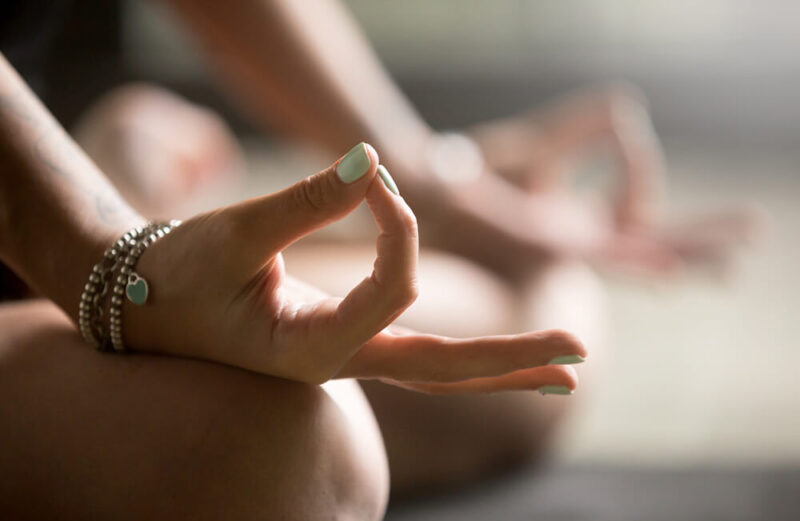In the vast and intricate science of yoga, the graceful postures (asanas) and breathing techniques (pranayama) often take center stage. However, there exists a more subtle, yet equally powerful, practice: the art of Mudra. Mudras are symbolic hand gestures that act as seals to channel the body’s energy flow. By curling, crossing, touching, and extending the fingers and hands, we can communicate with the body and mind, influencing energy pathways, calming the nerves, and deepening meditation.
Think of your body as a complex circuit board of life force energy, or prana. When these circuits are open and flowing, we experience health and vitality. When they are blocked or unbalanced, we may feel tired, stressed, or unwell. Mudras work by completing these energy circuits, redirecting prana back into the body to create balance and harmony. Integrating these simple gestures into your daily yoga or meditation practice can profoundly enhance your physical, mental, and spiritual well-being.
Here is a guide to five foundational mudras that every practitioner should know.
1. Gyan Mudra (Mudra of Knowledge)
This is perhaps the most recognizable of all mudras, often seen in images of the Buddha in meditation.
-
How to Form: Gently touch the tip of your index finger to the tip of your thumb. The other three fingers remain straight but relaxed.
-
Benefits: Gyan Mudra is a powerhouse for the mind. It is believed to enhance concentration, boost memory, and stimulate the brain. It helps to calm anxiety, promote mental clarity, and is excellent for anyone seeking to gain insight or knowledge. This mudra connects you to a higher consciousness and is perfect for the beginning of a meditation session.
2. Prithvi Mudra (Mudra of the Earth)
For a sense of stability and grounding, turn to the Prithvi Mudra.
-
How to Form: Join the tip of your ring finger with the tip of your thumb. Apply gentle pressure. Keep the other fingers extended.
-
Benefits: As its name suggests, this mudra activates the earth element within the body. It is renowned for reducing feelings of weakness and fatigue, increasing vitality, and improving overall physical strength. Prithvi Mudra can also help in building self-confidence and fostering a sense of stability and rootedness during times of change or stress.
3. Vayu Mudra (Mudra of the Air)
Designed to pacify the air element in the body, Vayu Mudra is a natural remedy for imbalance.
-
How to Form: Fold your index finger so that its tip rests at the base of your thumb. Then, gently press the thumb over the folded index finger. The other three fingers should be straight.
-
Benefits: This mudra is primarily used to calm the excess air in the body, which is thought to be the cause of issues like gas, bloating, joint pain, and nervous tremors. It can also help to reduce anxiety and a restless mind. Practitioners use it to find a sense of calm and to soothe the nervous system.
4. Apana Mudra (Mudra of Digestion)
Apana Vayu is the downward-moving energy in the body, responsible for elimination and purification. This mudra helps regulate that vital force.
-
How to Form: Bring the tips of your thumb, middle finger, and ring finger together. The index and little fingers remain straight.
-
Benefits: This is a key mudra for detoxification. It helps to regulate the excretory system, easing constipation and supporting kidney and bladder function. Furthermore, Apana Mudra is known to balance the body’s internal chemistry, helping to purify the blood and boost the immune system.
5. Dhyana Mudra (Mudra of Meditation)
When you see a figure in deep, serene meditation, they are likely holding the Dhyana Mudra.
-
How to Form: Rest your hands in your lap, right hand on top of the left, with the palms facing upward. Gently touch the tips of the thumbs together, forming a subtle triangle. This represents the unification of form and formlessness.
-
Benefits: This gesture is the ultimate tool for deepening meditation. It promotes a state of profound peace, concentration, and spiritual absorption. By calming the chatter of the mind, it allows you to access deeper layers of consciousness and fosters a powerful connection between the individual self and the universal whole.
Weaving Mudras into Your Practice
Incorporating mudras into your life is simple. You can practice them while sitting in meditation, during pranayama, or even while holding a seated yoga asana like Sukhasana or Padmasana. You can also use them discreetly throughout the day—while working, waiting in line, or watching TV. Hold each mudra for at least 5-15 minutes, focusing on your breath and the subtle sensations in your hands.
By consciously shaping your energy with these sacred hand gestures, you tap into an ancient wellspring of healing and self-awareness. Begin with one or two that call to you, and discover the transformative power that rests, quite literally, at your fingertips.
